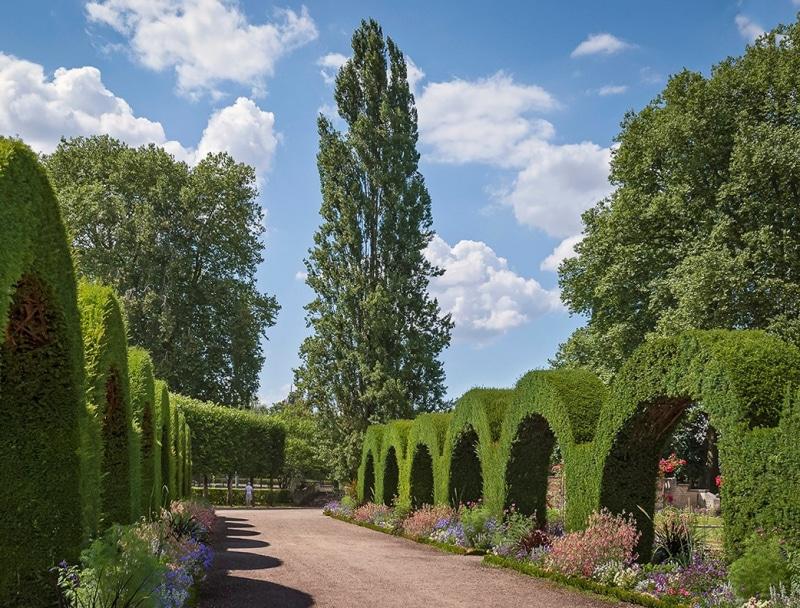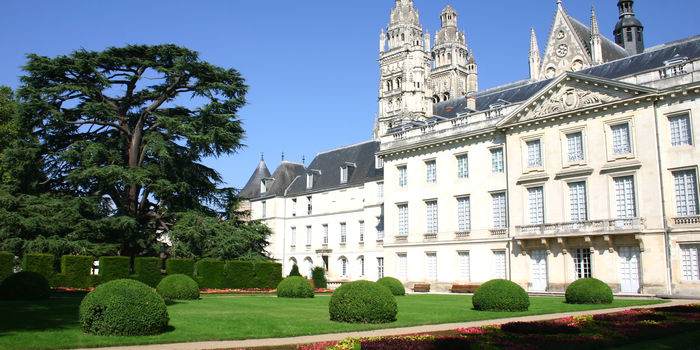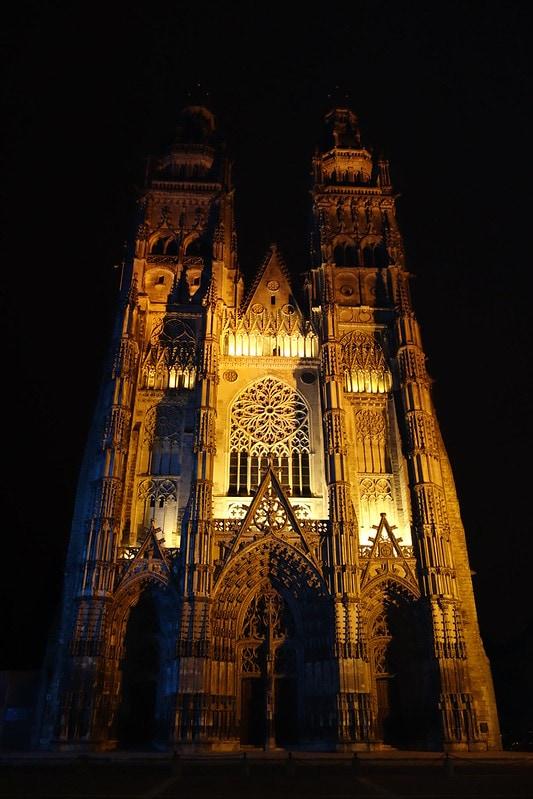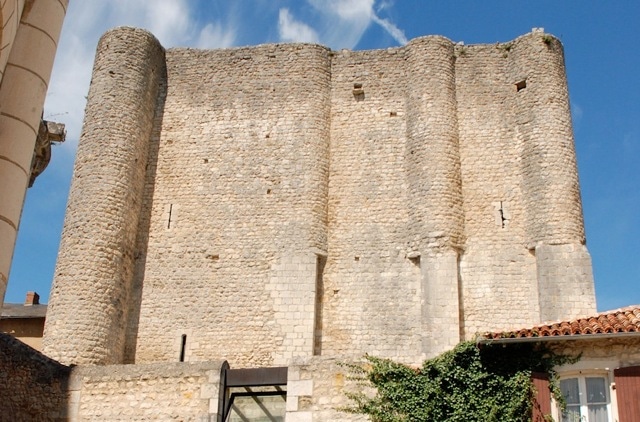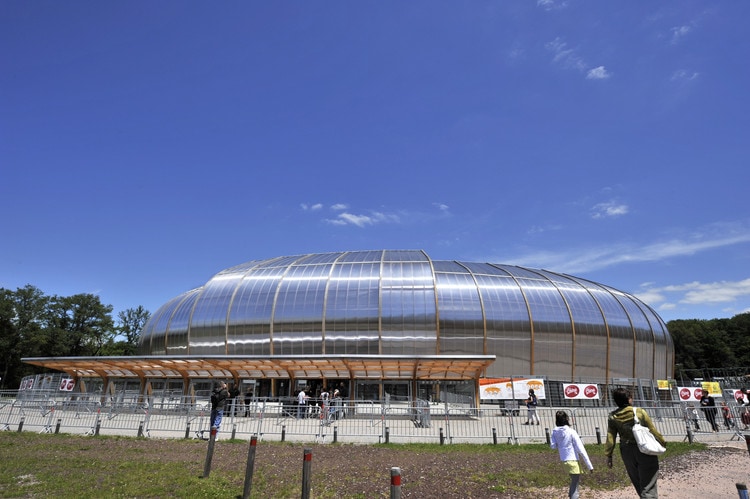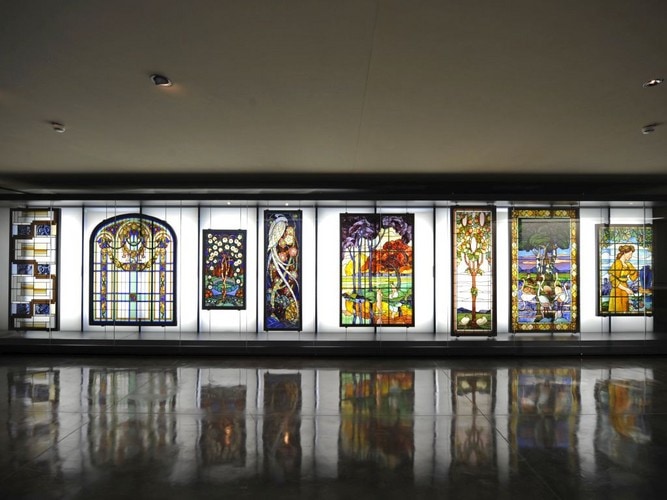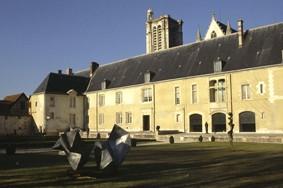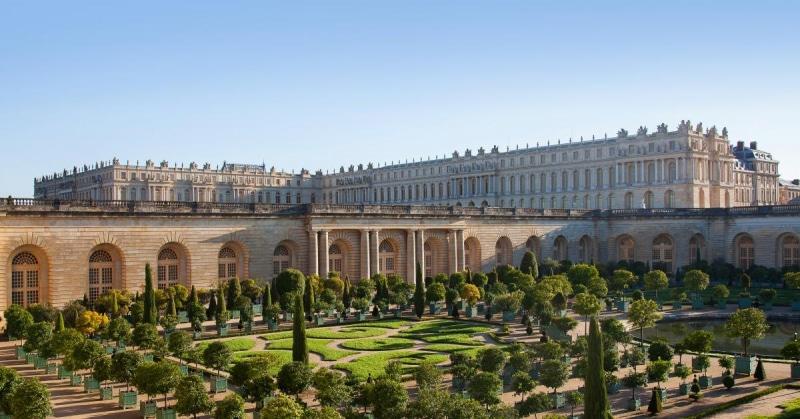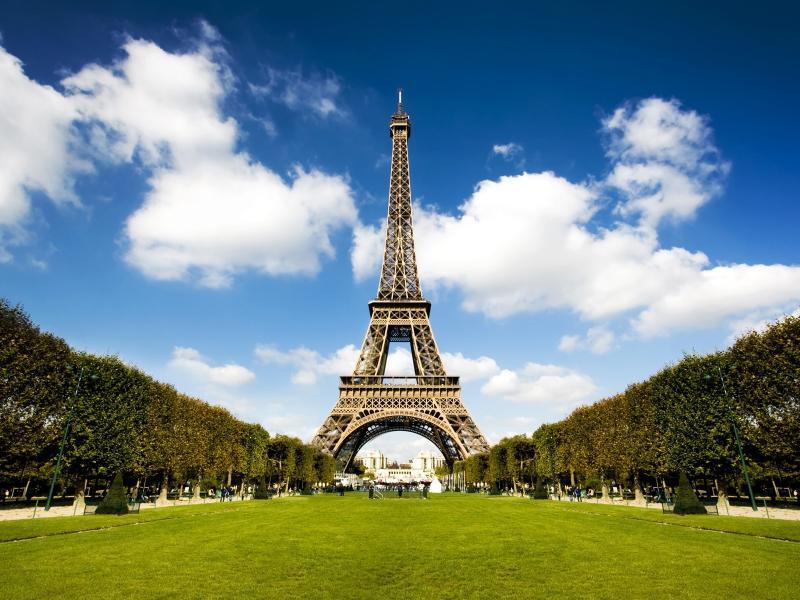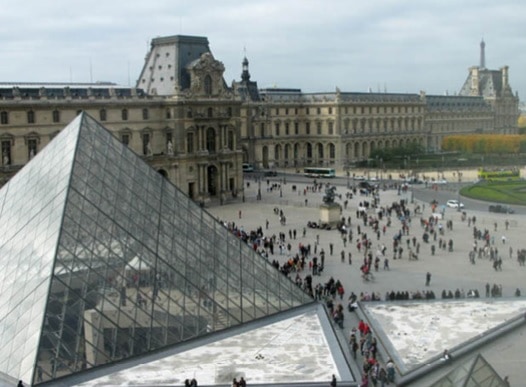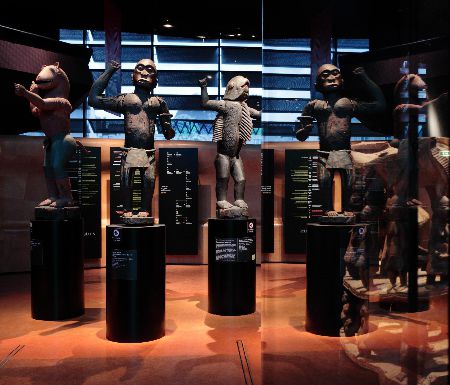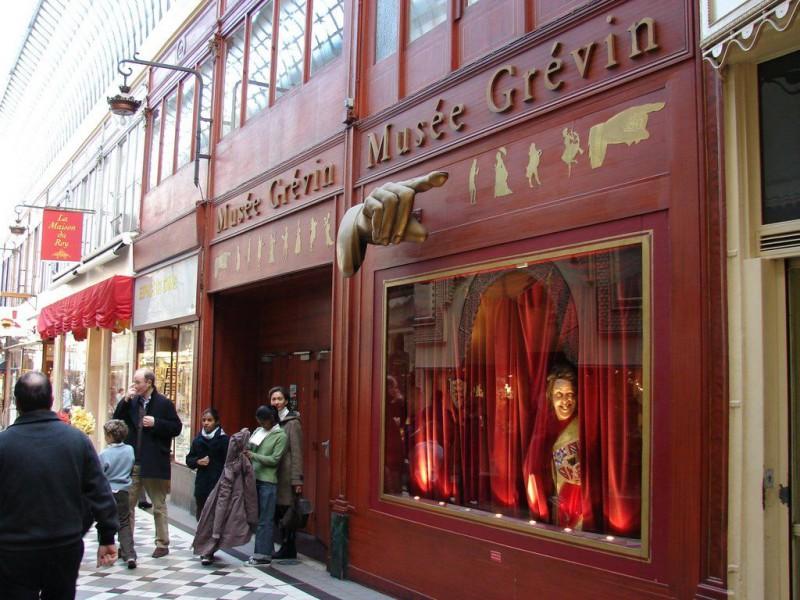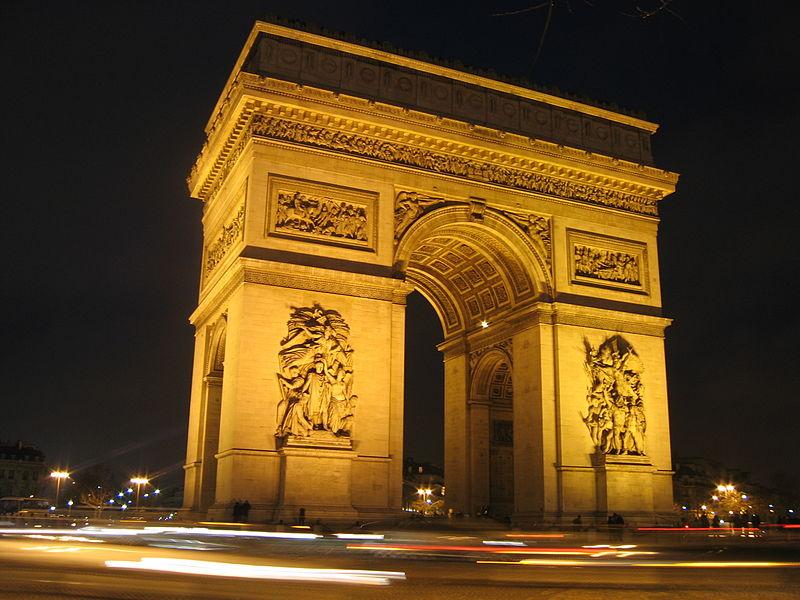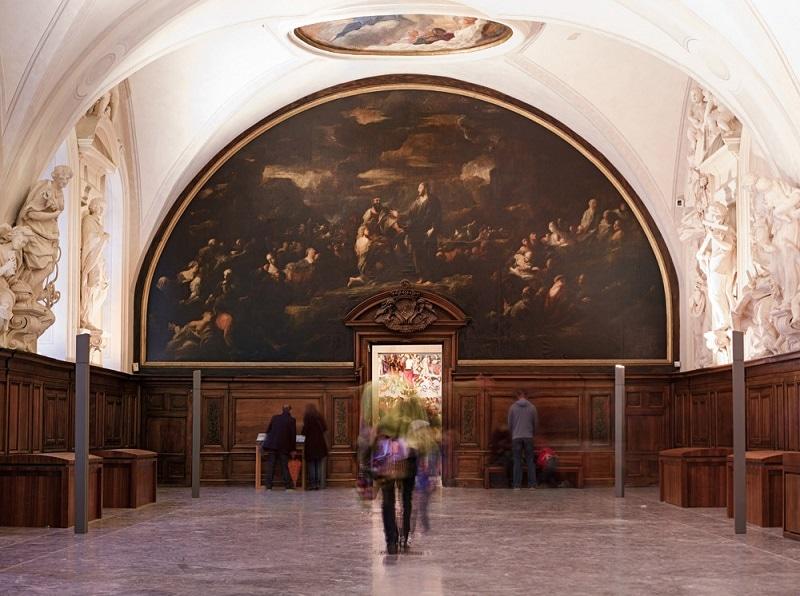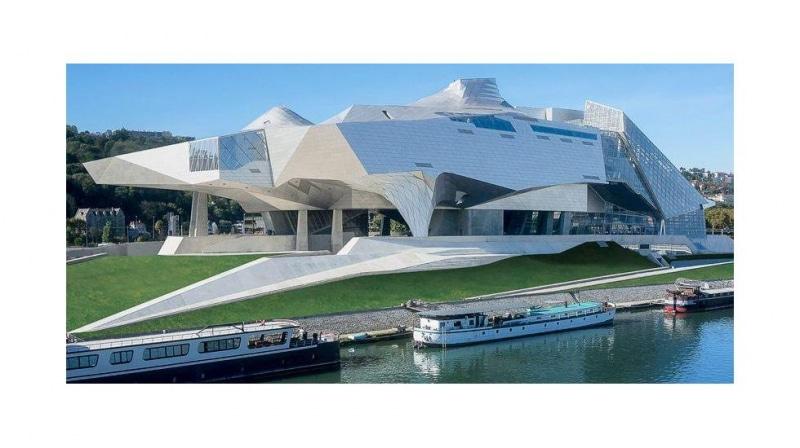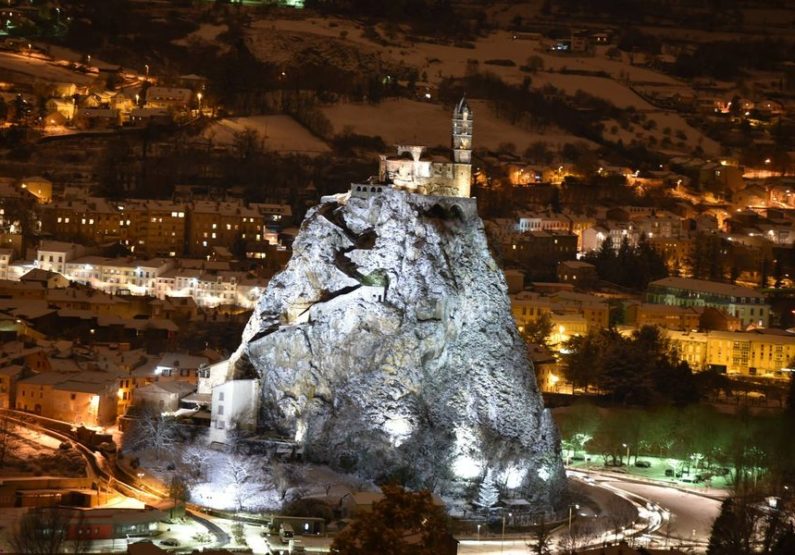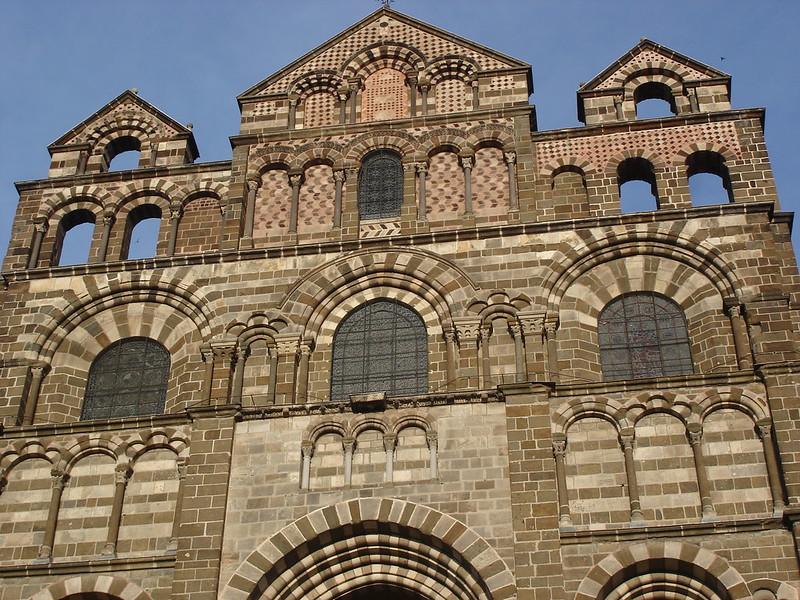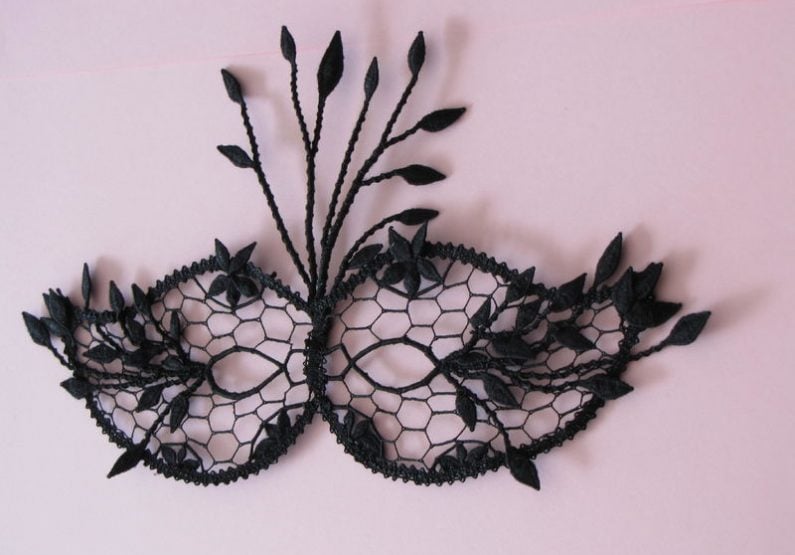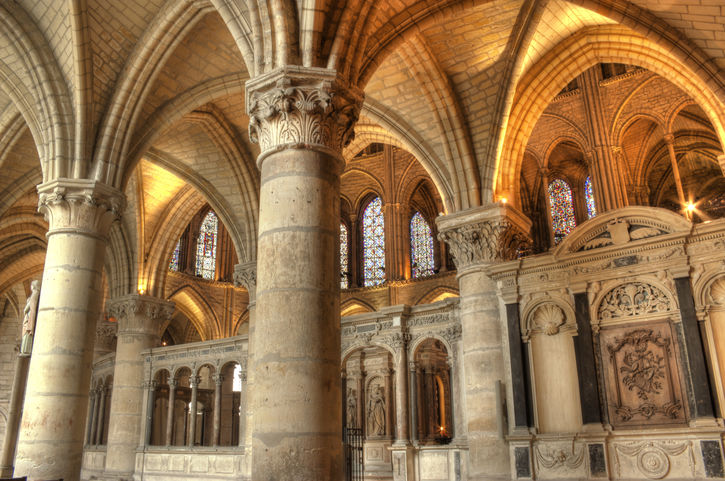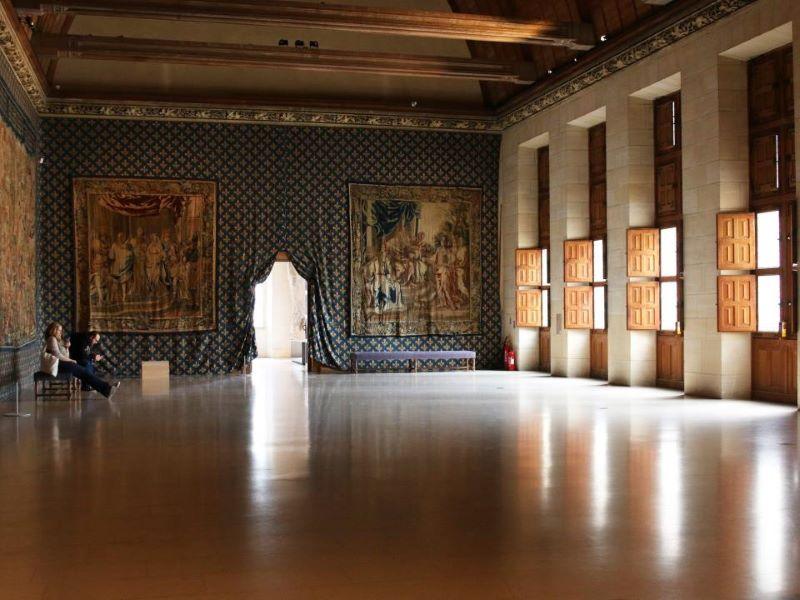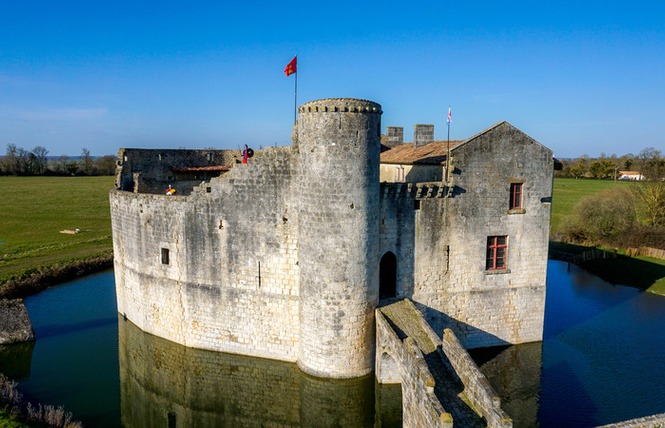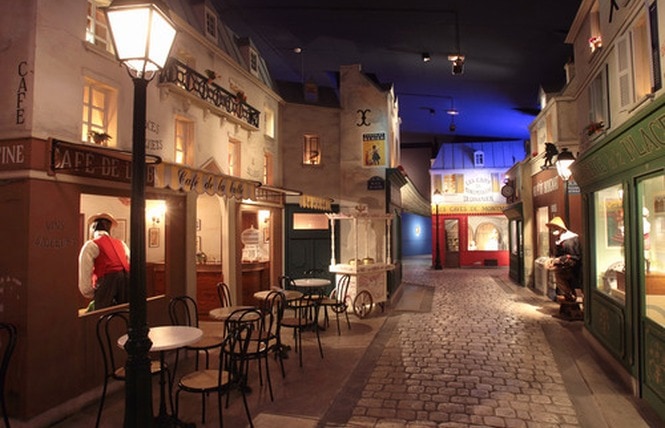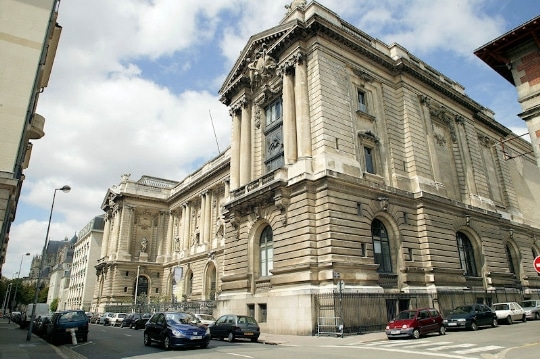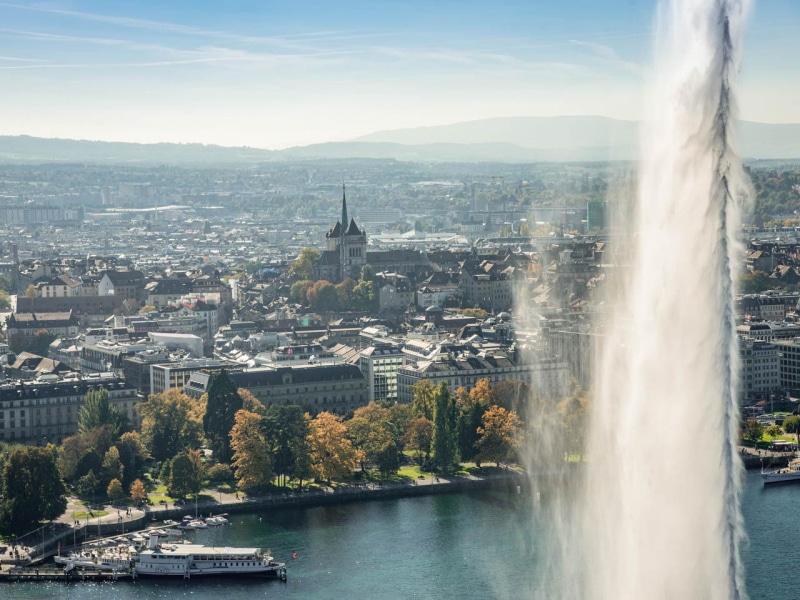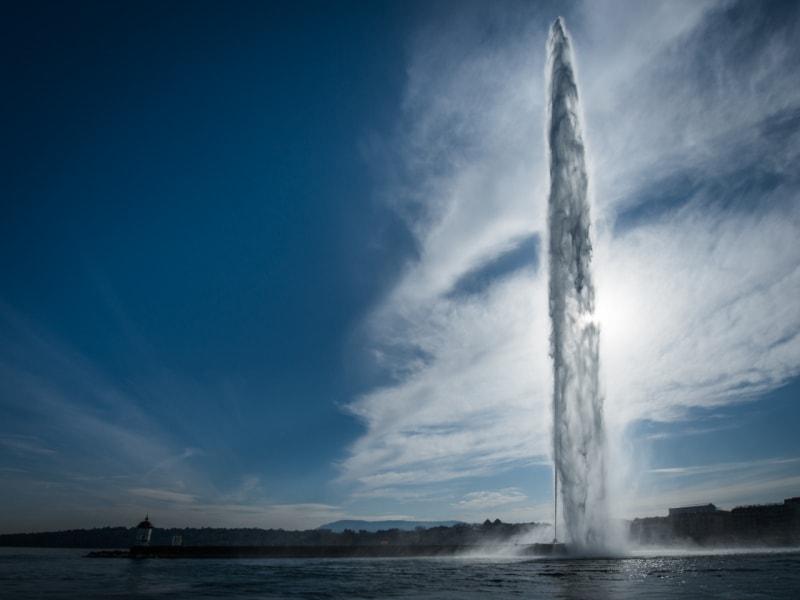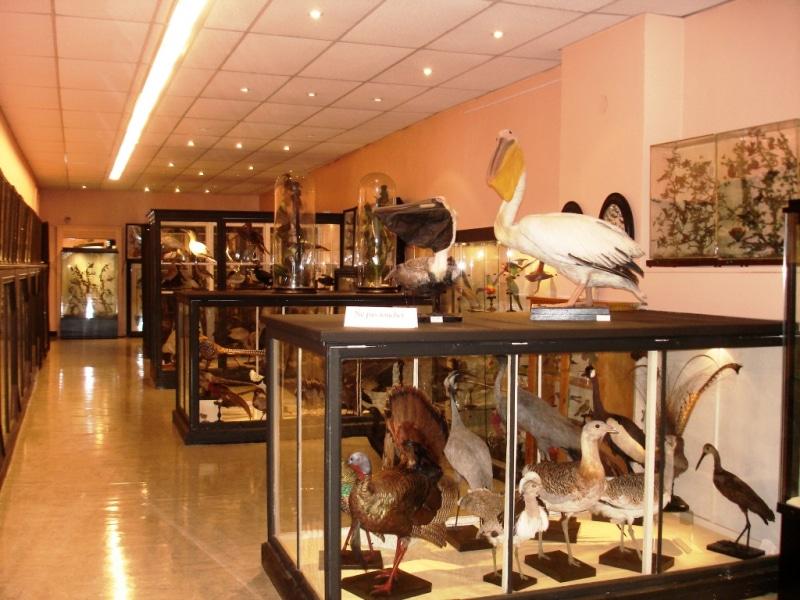ArtandCulture, Bourges
Removed from Unnamed collection
Pres-Fichaux Garden
What gives this garden its special charm is the sculpted vegetation: the hedges, the distinctively French lime trees, the immaculate lawns, the beautifully trimmed yews, which are enhanced by the less orderly arrangement of the flower-beds and ponds.
The Prés Fichaux, inaugurated in 1930, still boasts typically Art Deco ornaments and statues which earned its addition to the supplementary inventory of historic monuments in 1990. http://www.ville-bourges.fr/_en/site/heritage_parks-gardens
Map
Explore more places related to this search:
Removed from Unnamed collection
The Museum of Fine Arts
The Museum of Fine Arts Tours is housed in a historic building of exceptional quality. The site is of paramount importance for the history of ancient Caesarodunum; the museum houses in its underground the most beautiful lapidary inscription to the glory of the Turons. The first bishops had chosen to settle near the cathedral, in a palace along the wall of the IV the century.
After 1789, the Palace of the Archbishops became a theatre, Central School, library and then by departmental decree of October 6, 1792, and with the passionate energy of the founder of the city's drawing school, Charles-Antoine Rougeot and his son-in-law, Jean -Jacques Raverot, became the repository of works seized during the Revolution.
The museum was officially created in 1801, 1802 and during the XIX the century, the buildings are again assigned to the archdiocese. It was not until 1910 that the collections returned to the old archepiscopal palace. http://www.mba.tours.fr/131-le-musee-des-beaux-arts-de-tours.htm
Map
Removed from Unnamed collection
Tours Saint-Gatien Cathedral
Cathédrale Saint-Gatien de Tours is dedicated to the first bishop of the city and is a 'must-see' when visiting the Loire Valley. The current cathedral sits on the site of a number of predecessors all of which were damaged by fires. One in 1166 during the conflict between Louis VII of France and Henry II of England (who also ruled over the neighbouring region of Anjou at the time).
Construction proper on the existing cathedral began in 1270 but progress was slow and it was not completed until 1547, so what we have is a building made up of styles spanning a number of centuries, though the predominate 'style' is obviously 'Gothic'.
The nave was completed around 1450, in the flamboyant style we see today. Then, from 1450 to 1484, the facade is built in the same style on the foundations of a Gallo-Roman wall. The north tower was completed around 1507 while the south tower, in the same style, would not be completed for another 40 years!. Both seem to have acquired renaissance caps. https://www.experienceloire.com/tours-cathedral.htm
Map
Removed from Unnamed collection
The Donjon de Gouzon
The Donjon de Gouzon houses a space of Industrial Archeology on 4 levels.
This dungeon of the twelfth century. and thirteenth century, restored houses a museum space on four levels.
The vertical movement is ensured by an elevator (public commission of the Delegation to the Visual Arts), work of the architect designer Sylvain Dubuisson. http://uk.poitiers-tourism.com/espace-d-archeologie-industrielle-du-donjon-de-gouzon-a-chauvigny/chauvigny/tabid/29114/offreid/da3eed0d-9a89-476f-b401-069943cf12e5/detail.aspx
Map
Removed from Unnamed collection
Zenith
Imagined by Bernard Tschumi, this building made of Limousin Douglas pine wood and wrapped in polycarbonate fits perfectly, thanks to its transparency, into the surrounding forest. With a welcoming capacity of 6,000 seats, it is dedicated to the great artistic and cultural events of the city. http://www.limoges-tourisme.com/en/What-to-see/Monuments/(fiche)/zenith-191003273-01bec22
Map
Removed from Unnamed collection
The Fine Arts Museum of Limoges
This large 18th-century-style building, designed by the Brousseau brothers, used to be the town's Bishop palace. The building was also used as a fire station as well as a hospital. It was restored from the 1802 concordat, onwards into the 19th century: http://www.limoges-tourisme.com/en/What-to-see/Museums/(fiche)/the-fine-arts-museum-of-limoges-191000095-6f06ebf
Map
Removed from Unnamed collection
Basilique Saint-Urbain
Few cities in France can boast of having given a pope to Christianity. Champagne is an exception, with two pontiffs: Urbain II, born in 1042 in Châtillon (Marne), and Urbain IV, born in 1185 in Troyes in a house which disappeared to make way for the Saint-Urbain church.
A masterpiece of Gothic art with its superb proportions, its stone lace and its immense canopies, Saint-Urbain is called "the Parthenon of Champagne". The vast portal, covering the entire western part of the building, was completed in 1905, but the tympanum, on which there is a magnificent Last Judgment, dates from the 13th century.
Upon entering the church, one is struck by the elegance, the sobriety and the brightness of the place. The surprisingly light transept and choir have retained their magnificent original stained glass windows, dating from around 1270 and restored in 1992 by the Trojan workshops Le Vitrail. The statuary is also admirable, notably the famous Virgin of the Grapes (chapel on the south aisle) whose finesse and meditation are typical of the Trojan School of the 16th century.
In 1935, the remains of Urban IV were transferred to the church, which received the title of basilica in 1964. http://www.tourisme-troyes.com/patrimoine-religieux/basilique-saint-urbain-452329
Map
Removed from Unnamed collection
Museum of Modern Art - Former Episcopal Palace
The Museum of Modern Art was born from the donation made to the State in 1976 by Pierre and Denise Lévy, Trojan industrialists and great art lovers. http://www.tourisme-troyes.com/decouvrir/les-musees/musee-d-art-moderne-ancien-palais-episcopal-425997
Map
Removed from Unnamed collection
The Palace of Versailles
The history of the Palace of Versailles starts at the 17th century. It was first a hunting lodge, then a seat of power, and finally, from the 19th century onwards, a museum. Composed of the Palace, the gardens, the Park, the Trianon estate and several buildings in town, today the Estate of Versailles spreads over more than 800 hectares. http://en.chateauversailles.fr/discover/estate
Versailles
Map
Removed from Unnamed collection
The Collegiale Saint-Pierre-la-Cour
Place of exhibitions, concerts and cultural events in Le Mans. Backing onto the Roman ramparts, which were altered during the medieval period, is the Collégiale Saint-Pierre-la-Cour, once the chapel of the palace of the Comtes du Maine. https://www.lemans-tourisme.com/en/partenaire/view/id/2217/category/12
Map
Removed from Unnamed collection
The Eiffel Tower
The Eiffel tower history represents a part of national heritage. It's as been the symbol of France and Paris for decades. But when Gustave Eiffel achived its construction in 1889, the tower was only meant to be temporary in the Parisian landscape and was far from being the parisians' favourite landmark. Discover the evolution and the history of the Paris Eiffel Tower.The most popular tourist place in Paris has stretched to the Parisian skies for 127 years. Although now symbolic of France, it wasn’t meant to last. Without a doubt, the turning point in the Eiffel Tower history took place at the 1889 Universal Exposition. In commemoration of the 100th anniversary of the French Revolution, a competition was organized with the aim to “build on the Champ-de-Mars an iron tower with a square base, 125 meters wide and 300 meters high.” Out of the 107 proposals submitted, Gustave Eiffel’s was chosen. By his side were engineers Maurice Koechlin and Emile Nouguier as well as architect Stephen Sauvestre. https://www.pariscityvision.com/en/paris/landmarks/eiffel-tower/history
Map
Removed from Unnamed collection
Louvre Museum
Every trip to the capital deserves a visit to the Louvre to discover the wealth of treasures it contains. The museum houses western works of art dating from the Middle Ages to 1848, in addition to collections of ancient oriental, Egyptian, Greek, Etruscan and Roman civilizations, as well as graphic and Islamic arts. From room to room, the former royal palace reveals its masterpieces to the public: the Mona Lisa, The Raft of the Medusa, the Venus de Milo, and The Winged Victory of Samothrace. In total, there are 35,000 works to be discovered or re-discovered! With its eight hundred year old history, the Louvre has been influenced by numerous architectural trends, from the medieval fortress of the 12th century to the glass pyramid by Pei (1989). The latest addition, housing the Islamic arts section, was designed by architects Mario Bellini and Rudy Ricciotti. The undulating glass canopy covers the Visconti courtyard, flooding the 2,800 m² new wing with light. A visit to the museum is particularly pleasant at night: the Louvre is less crowded and visitors can enjoy stunning night-time views of Pei’s glass pyramid, the Cour Carrée and the Seine. https://en.parisinfo.com/paris-museum-monument/71065/Musee-du-Louvre
Map
Removed from Unnamed collection
Quai Branly Museum
The musée du quai Branly - Jacques Chirac is the heir to 200 years of history, enrichment, study and conservation of public collections. It conserves almost 370,000 works originating in Africa, the Near East, Asia, Oceania and the Americas which illustrate the richness and cultural diversity of the non-European civilisations from the Neolithic period (+/-10,000 B.C.) to the 20th century. http://www.quaibranly.fr/en/
Map
Removed from Unnamed collection
Palais de Tokyo Museum
The Palais de Tokyo, an art deco building that dates from 1937, reopened in 2001 after a new interior design by French architects Anne Lacaton & Jean-Philippe Vassal who selected rough and ready style (concrete floor, wall and roof).
Today the most creative and fun museum in Paris, the only one to be open till midnight. The Palais de Tokyo, which is right next door to the Musée d'Art Moderne at the Trocadero, has opened as a showcase for contemporary art. The idea is to have no permanent collections, but to let experimental artists have somewhere in central Paris to express themselves, hence an opening full of “installation” and “interactive” art.
There is no permanent collection; instead, dynamic temporary exhibits spread over a large, open space that's reminiscent of a construction site, with a trailer for a ticket booth. http://www.paris-paris-paris.com/paris_landmarks/museums/palais_de_tokyo_paris
Map
Removed from Unnamed collection
Grevin Museum Paris
Discover a completely renovated Grévin Museum in Paris. Experience the Spirit of Paris of yesterday and of today with astounding scenes : the major events of the 20th Century, French history and the latest news.
The brasserie, the theatre, artists' studios. all the legendary Parisian haunts where you will rub shoulders with the "Tout Paris" celebrities.
Three hundred wax figures are waiting to meet you at the Grévin Museum, to be photographed with you, to be remembered forever... http://www.paris-paris-paris.com/paris_landmarks/museums/grevin_museum_paris
Map
Removed from Unnamed collection
Triumphal Arch
Raised over command of Napoleon Ier, the Arch of Triumph dominates the Avenue of the Champs-Elysées. Its construction began in 1806 and ended in 1836, 15 years after the Napoleon's death. It is possible to reach the roof of the monument. The perspective of The Louvre - Concorde Square - Grand Arch of Defense is superb. It's one of the most beautifull panorama of Paris.
The site on which the monument stands is called the Place de l'étoile, because of the multicolored star built into the pavement of the roundabout.
The arch is 50 meters high, 45 meters wide, and 22 meters thick and is decorated with low relieves which evoke the battles of the French first Republic and Empire periods (1789-1815). http://www.paris-paris-paris.com/paris_landmarks/monuments/arc_de_triomphe
Map
Removed from Unnamed collection
Rosa Mir Garden
Le Jardin Rosa Mir, or the Rosa Mir Garden, located in the heart of Croix-Rousse in Lyon’s 4th arrondissement, is one of Lyon’s unique treasures, founded in the dreams of a self-taught artist.
The Rosa Mir Garden is a small, originally private garden located in the courtyard of an apartment building. Created between the years of 1957 and 1977, the garden is a tribute to the creativity and artistic vision of its creator, a Spanish mason called Jules Senis Mir.
Made up of pillars, basins, obelisks and pergolas sculpted from pebbles and shells, the monument pulls its inspiration from Arab-Andalusian motifs and styles. It is filled with over 10,000 plants, from cacti to perennials to roses to oregano and lemon. https://thisislyon.fr/things-to-do/historical-monuments/jardin-rosa-mir/
Map
Removed from Unnamed collection
Lyon Gallo-Roman Civilisation Museum
The Museum of Gallo-Roman Civilisation astounds the visitor with its avant-garde architecture and carefully-chosen exhibits, nudging you to uncover more of what Lyon’s Roman, Gaul and Celtic forebears got up to.
Facing the rising sun and the Alps, way up over the Confluence of Rhône and Saône, the Museum of Gallo-Roman Civilisation chronicles five centuries of the city’s history under Rome when Lyon was known as the dazzling capital Lugdunum. Dug deep inside Fourvière hill in the 5th district of Lyon, with its two huge windows overlooking its neighbouring Amphitheatre and Odeon, the Gallo-Roman Museum of Lyon is akin to a submarine, set to journey through the undergrowth and vestiges of this ancient civilisation.
Step on-board and be subtly wowed by polychrome mosaics, the sarcophagus of the triumph of Bacchus, the unique Gallic Coligny calendar, a plan-relied of the ancient town, a rare circus mosaic, not to mention the Tabla Claudiana, reproducing a speech by the emperor Claudius, all set inside an avant-garde architectural experience whipped up by Bernard Zehrfuss. https://thisislyon.fr/things-to-do/museums/museum-gallo-roman-civilisation/
Map
Removed from Unnamed collection
Museum of Fine Arts of Lyon
The Museum of Fine Arts is one of the largest French and European museums. Located in the heart of Lyon, between the Rhône and Saône rivers, it is found in a magnificent building dating from the 17th century.
The collections are exhibited in over 70 rooms and offer visitors an outstanding sample of art from antiquity to contemporary art. The museum is regularly enriched, through an active acquisition policy that relies on donors, art lovers, collectors and the descendants of artists. http://www.mba-lyon.fr/mba/sections/languages/welcome
Map
Removed from Unnamed collection
The Musee des Confluences
The Museum inherited over two million pieces collected from the 16th century through today. Referred to as “the 21st Century’s Cabinet of Curiosities,” the institution’s finds relate to paleontology, mineralogy, zoology, entomology, and ethnography. http://ca.france.fr/en/discover/musee-confluences-lyon-0
Map
Removed from Unnamed collection
Rocher St. Michel D'Aiguilhe
North of the town of Le Puy-en-Velay, Aiguilhe is famous for its rock (a dormant volcanic pipe) with an astonishing and magnificent chapel dedicated to St Michael built in the 10th century.
This is one of the most important pre-Romanesque and Romanesque monuments in Auvergne.
Prosper Mérimée included the building in the first list of Historic Monuments drawn up in 1840. More recently, it came fourth in the list of French people’s favourite monuments in 2014.
Godescalc, the Bishop of Puy, and Truannus, the dean of the chapter of Puy Cathedral, commissioned work on a chapel devoted to St Michael in 961. Godescalc was also the first French pilgrim to follow the Way of St James in about 950, inaugurating the "Via Podiensis" trail to Santiago de Compostela.
The original oratory in this imposing structure was limited to today’s choir area. It was enveloped in a larger monument in the 12th century, built to follow the outlines of the rock’s summit. The extended chapel was built without foundations, and contains a nave, an ambulatory and a tribune, along with a remarkable polychrome and trefoil-shaped facade. https://www.lepuyenvelay-tourisme.co.uk/monuments-puy-en-velay/rocher-et-chapelle-saint-michel-daiguilhe/
Map
Removed from Unnamed collection
Cathedral Notre-Dame du Puy
The Puy-en-Velay Cathedral, listed as a UNESCO World Heritage Site since 1998, ranks as the 2nd favorite monument of the French in the show presented on France 2 by Stéphane Bern in 2015.
After a first church built in the fifth century, the cathedral was built on Mount Anis. In the twelfth century, the influx of pilgrims led to sit four spans above a vaulted porch, to compensate for the slope of Mount Anis. The entrance was made by a staircase which opened in the middle of the central nave.
In the nineteenth century, the building was considerably transformed, but the six cupolas and beautiful painted decorations were preserved. From 1994 to 1999, an overall restoration allowed the restoration of the central staircase closed in the eighteenth century, the repair of interior facing and the winding of the organ with its double-sided buffet of the seventeenth century.
A new altar was placed at the crossing of the transept, while the altar of the "pilgrims", against the wall, carries the "Black Virgin" who replaced the primitive statue, burned to the Revolution. https://www.lepuyenvelay-tourisme.fr/monuments-puy-en-velay/cathedrale-notre-dame/
Map
Removed from Unnamed collection
The Bobbin Lace Learning Center
The Bobbin Lace Education Centre was set up in 1974. Its two main missions are to pass on the tradition and practice of bobbin lace-making and to preserve the lace heritage.
The earliest records of lace-making in Velay date from the 16th century. The art briefly declined in the 17th century, after the Toulouse Parliament prohibited it. The Jesuit Jean-François Régis helped to revive lace-making and today is the patron saint of lacemakers.
Over time, the Centre has acquired an international reputation. Its correspondence courses are followed all over the world, making it a reference in the field.
A themed exhibition is organised in the exhibition rooms each year. https://www.lepuyenvelay-tourisme.co.uk/monuments-puy-en-velay/centre-denseignement-de-la-dentelle-aux-fuseaux/
Map
Removed from Unnamed collection
Saint-Remi Basilique
Listed as a UNESCO World Heritage Site, Saint-Remi Basilica is a collection of history and art which should not be missed. The 11th century Romanesque nave was lengthened by two transepts at the end of the 12th century to render it accessible to a greater number of pilgrims. At the same time, the facade was reconstructed, while a choir ambulatory and radiating chapels were created. While the Gothic style is apparent in these transformations, they in no way altered the homogeneity and serenity of the church. It contains Saint Remi's tomb, a collection of 12th century stain-glass windows and a Cattiaux grand organ, inaugurated in the year 2000. https://www.reims-tourism.com/basilique-saint-remi/reims/pcu0000000000733
Map
Removed from Unnamed collection
Palace of Tau
Transformed at the end of the 17th century by Jules Hardouin-Mansart and Robert de Cotte, the Palace of Tau still holds rooms that have retained their medieval aspect. This is the case with the Palatine Chapel (13th century) and the Tau Room, in which the coronation banquet was held. Decorating the walls are 15th century tapestries which tell the story of "Mighty King Clovis".
The royal treasury's most remarkable objects are Charlemagne's talisman (9th century) and Saint Remi's chalice (12th century). The Sainte-Ampoule, or "holy flask", contains the holy oil with which new kings were anointed during the coronation ceremony. https://www.reims-tourism.com/palais-du-tau/reims/pcu0000000000855
Map
Removed from Unnamed collection
Musee Des Beaux Arts
The Museum of Fine Arts boasts one of the most prestigious collections in France. Paintings, sculptures, drawings and objects of art produced by all schools, ranging from 15th century to the present are on display in a chronological order: Perugino, Veronese, Rubens, Caravaggio, Velázquez, Ribera and Poussin. http://en.rouentourisme.com/arts-antiques/musee-des-beaux-arts-2246-en/
Map
Removed from Unnamed collection
Saint Jean Dangle Fort Castle
The fairy castle Mélusine
Family go for 3h visit at the time of the knights! Upon your arrival, dress up for free and start exploring the castle through a new puzzle route for children and a quiz for the older ones. http://www.holidays-la-rochelle.co.uk/what-to-see-and-do/discover-la-rochelle/monuments-to-visit/1053557-chateau-fort-saint-jean-dangle
Map
Removed from Unnamed collection
Musee Des Automates Et Modeles Reduits
More than 300 automated models of famous people, historic scenes of life in La Rochelle and animated display cases to enchant both old and young visitors alike. . Your visit will also take you to a reconstruction of Montmartre with its 1900s atmosphere with artists, musicians http://www.holidays-la-rochelle.co.uk/what-to-see-and-do/discover-la-rochelle/monuments-to-visit/123305-musee-des-automates-et-modeles-reduits
Map
Removed from Unnamed collection
Fine arts Museum of Nantes
Museum of fine arts in Nantes was founded in the early nineteenth century and has since been considered one of the largest and best museums in France, outside Paris.
Since 1804, this Museum houses a unique collection of sculptures and paintings that were created from the XII century to the beginning of XX century. http://worldtourisminfo.com/france/2775-Fine-arts-Museum-of-Nantes-photo-description-Musee-des-BeauxArts-de-Nantes.html
Map
Removed from Unnamed collection
Geneva Old Town
The Vieille-Ville is the largest historic town in Switzerland, and is dominated by St. Peter's Cathedral, the symbolic location of the Reformation. Climb the 157 steps to the top of the tower for a unique panorama of the city. Then take a stroll in the charming surrounding alleys and passageways, each telling its own story about Geneva's history. https://www.geneve.com/en/attractions/the-old-town-and-its-treasures/
Map
Removed from Unnamed collection
The Jet D'eau
The magnificent water jet is 140 metres high, with 500 litres of water passing through it per second at a speed of 200 km per hour! Used initially for distributing the Rhône's propelling force to the city's craftspeople, it became the Jet d'Eau when the workshops required an additional flow. Since 1891 it has graced the centre of Geneva's harbour, and is the must-see tourist attraction! https://www.geneve.com/en/attractions/the-jet-d
Map
Removed from Unnamed collection
Theatre La Comedie de Valence
The Theatre La Comédie de Valence is a performance hall and events venue in the municipality of Valence (Drôme, Auvergne-Rhône-Alps). The programme varies depending on the season. https://www.france-voyage.com/cities-towns/valence-7592/theatre-comedie-valence-34242.htm
Map
Removed from Unnamed collection
Le Musee des Beaux-Arts et d
Created in 1897 following the meeting of the collections of the city and the Société dunoise of history and archeology, this museum of France houses eclectic collections: https://www.tourisme-chateaudun.fr/le-musee-p12.html
Map
Removed from Unnamed collection
Vieux-la-Romaine
Just a 15-minute journey from Caen, there's a great way to find out what everyday life was like in Gallo-Roman times! A museum, two restored houses and an archaeological dig are all open to visitors. The modern museum with its interactive resources (tactile exhibits, activity booklets...) and archaeological sites, a good excuse for a walk outside, will delight young and old alike. Activities and exhibitions throughout the year. English is spoken. Texts and brochures in English, German and Italian. https://www.caenlamer-tourisme.fr/noesit/!/fiche/vieux-la-romaine-musee-et-sites-archeologiques-663/
Map

